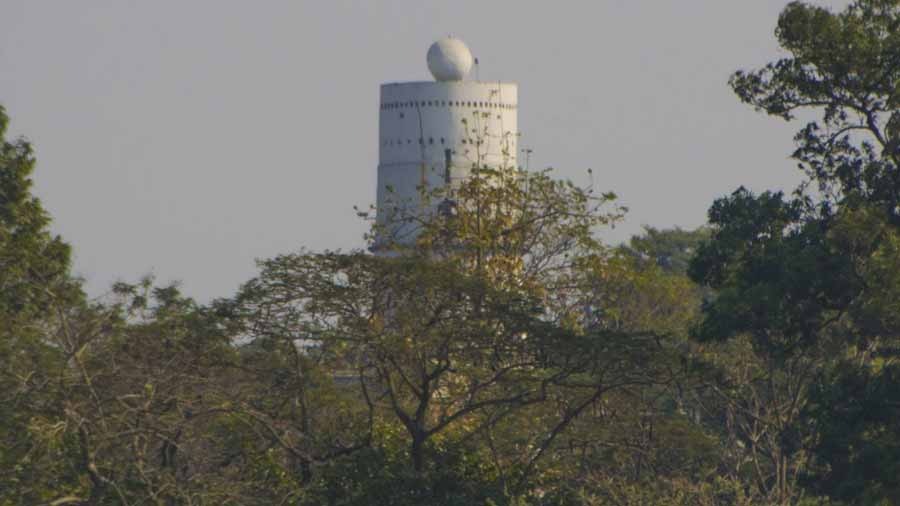When entering Kolkata via the Vidyasagar Setu, a glance to the left gives a bird’s-eye view of Fort William. Among the structures that stand out in this high-security zone of the city is a 100-foot-tall tower with a large white ball on top.
The British-built tower can also be spotted clearly while cruising on the Hooghly river. Standing on the southwest corner of the premises, this was once used as a viewpoint and a semaphore signalling device for ships, and known as the Ball Tower of Fort William.
A system of time synchronisation

The tower used to signal the time to offshore vessels Rangan Datta/Wikimedia Commons
Semaphore refers to a device to send visual signals that can be seen over a distance. A semaphore can use light, fire, flags or physical moving parts. Traffic lights, railway signals, even signalling at airports all use semaphores.
The most prominent attribute of the tower and a semaphore device, the ball, was added on top in 1881 by the Calcutta Port Commissioner. Every day at 12.55pm, the ‘time ball’ that was attached to a mast, rose half-mast. At 12.58pm, it would rise all the way to the top, and exactly at 1pm, it began a slow descent. The movement of the ball atop the tower provided the exact time to anyone looking, and was especially meant for navigators aboard ships offshore to verify the settings of their marine chronometers.
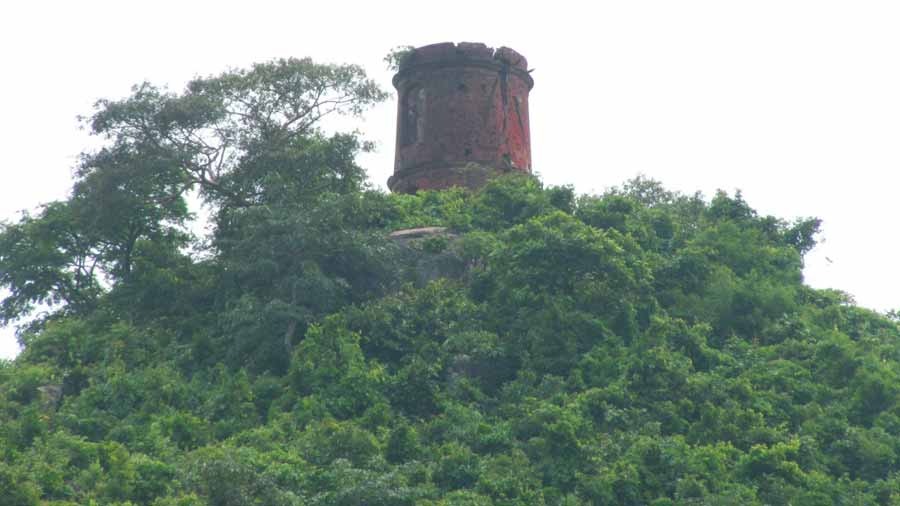
A tower at Hazaribagh Nishesh Singh
This system of time synchronisation became obsolete and was replaced with guns that had lime-coated ammunition, which produced white smoke when the guns were fired. However, before that time, the Ball Tower had a significant place in the pan-India optical telegraph system set up much before Dr. William Brooke O’Shaughnessy set up the first prototype electric telegraph system between Calcutta and Diamond Harbour.
Optical telegraph: The beginnings
Optical telegraph — sending messages over distances using visual means — had its roots in 18th-century Europe. The idea worked as an array system that used tangible visual aids such as movable devices and flags, through a series of watch towers set up at intervals over a long distance. The invention is credited to Frenchman Claude Chappe, who, along with his brothers, came up with the first system of optical telegraphy using semaphore signalling.
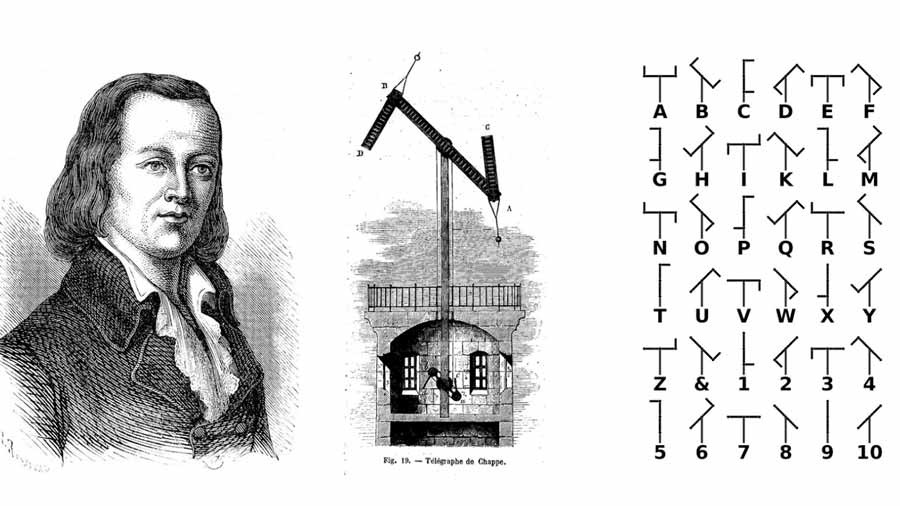
(L-R) Claude Chappe, Chappe's Semaphore system, Semaphore Signal codes Wikimedia Commons
The English soon adapted the Frenchman’s optical telegraph system and after modifications, it was brought to the colonial territory of India.
Optical telegraph in India and the Ball Tower of Fort William
The optical telegraph system in India was first suggested in the early 1800s for military use. Several lines were proposed from the capital city of Calcutta, including one connecting to the port city of Bombay. A survey line was to be set up between Calcutta and Chunar in Uttar Pradesh, and towers built along the route at different stations including Howrah, Hooghly, Purulia, Hazaribagh and Gaya along the Old Benaras Road or Military Road (later replaced by G.T. Road).
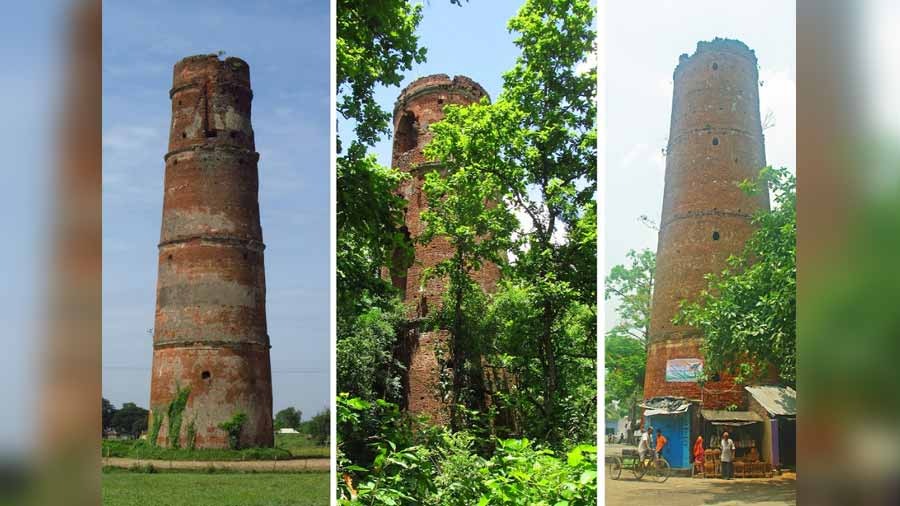
About 20 of the towers, presumed to be of the Calcutta-Chunar line, have been identified in parts of West Bengal, Jharkhand and Bihar Amitabha Gupta
The main operating station in Calcutta was to be at Fort William and a 100-foot-tall tower was built in 1824 for the purpose, which we know as the Ball Tower. The construction of connecting towers almost as tall began. An account in Anton A. Huurdeman’s book Worldwide History of Telecommunications, states that there were as many as 45 semaphore towers built along the Calcutta-Chunar line. It is hard to say how many of those still remain, but about 18 have been located so far — one in Howrah, three each in Hooghly and Purulia, six in Bankura, five in Jharkhand and two in Bihar near Sasaram. After limited use, with mounting costs, the Calcutta-Chunar line was abandoned as a failed project in 1828.

A painting of the operating station in a tower, similar to the one at Fort William, in Barrackpore British Library
Other than the Calcutta-Chunar line, there was a telegraph system set up between Calcutta and Barrackpore as well, with two towers built over the 25-odd kilometre distance. The main operating station was at Fort William and the other end was in the premises of Barrackpore’s Flagstaff House.
The sentinels still standing

Two-storied towers built on a hilltop Amitabha Gupta
The coming of the electric telegraph system sealed the fate of optical telegraph in India. Though these systems were never used for public service, they are a fascinating part of the history of communications in India. The system also gave George Everest the experience and means to later conduct the Great Trigonometrical Survey and some of the towers were used successfully for the survey as GTS towers.
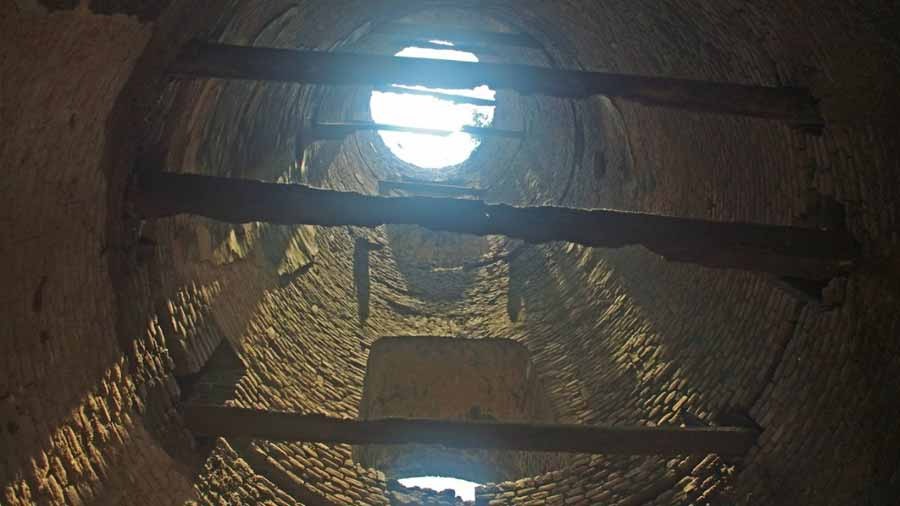
The hollow remains of a semaphore tower at Andul Amitabha Gupta
Today, most of the towers that stand are hollow, with a pair of facing doors at the base. There are round cutouts, possibly ventilators, and windows along the side presumably on each storey that existed. Wooden planks laid inside might indicate these floors and no staircase remains. Many of their European counterparts are now restored to their original forms and have become tourist attractions. Of the many such towers in India, the Ball Tower at Fort William still stands tall as a prime witness to the little-known history of optical telegraph in India.
Amitabha Gupta is a travel writer and a photographer who specializes in heritage and history of West Bengal. His work has been featured in many magazines and newspapers — both online and offline. He also conducts heritage walks and tours in and around Kolkata.
